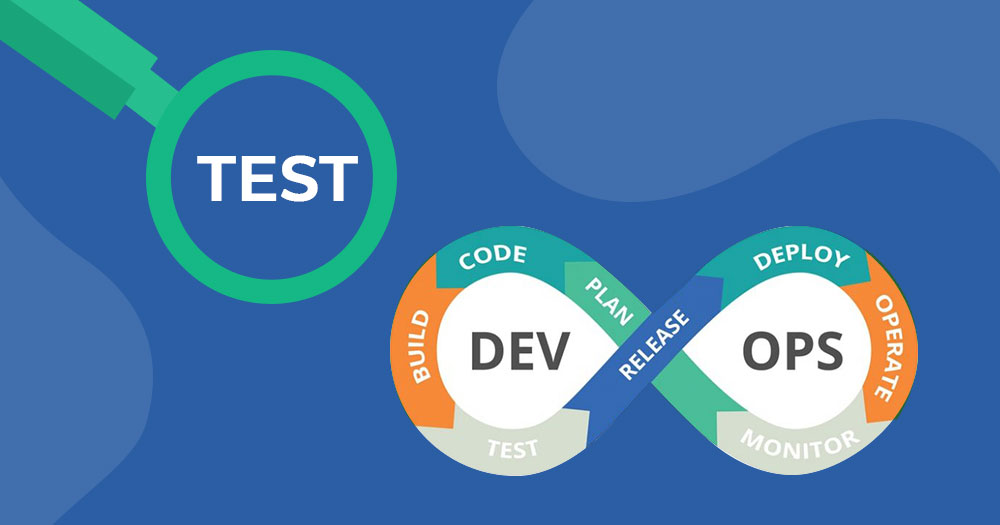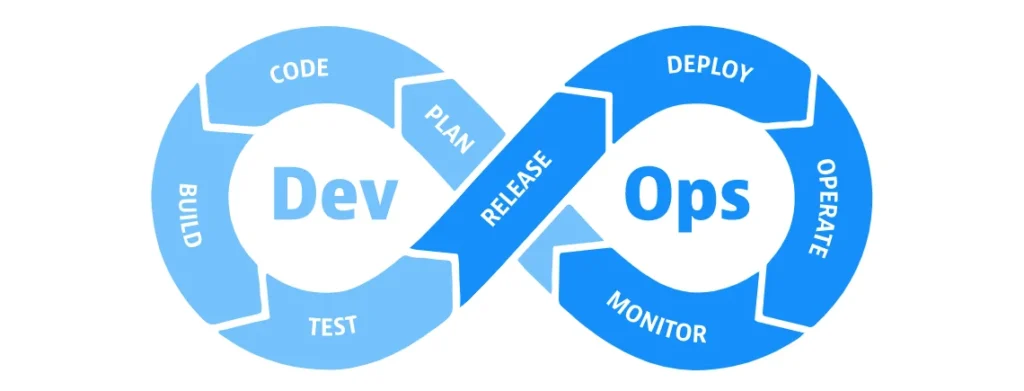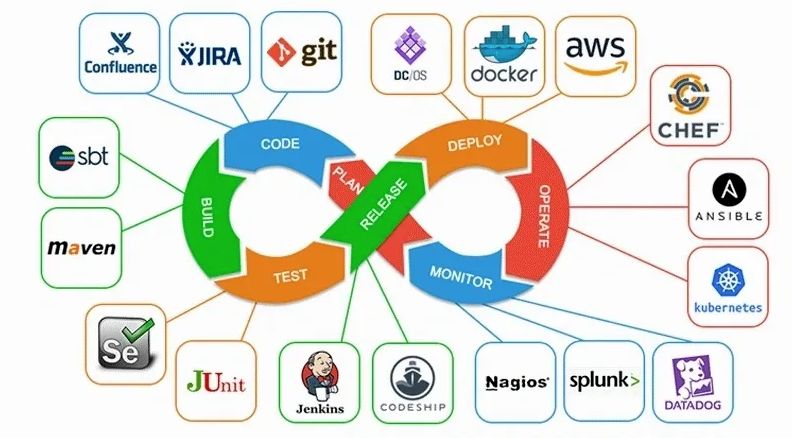How Do You Test Software In DevOps?

The process of automating and simplifying the full delivery lifecycle of software is known as DevOps testing. Many businesses start with the agile approach of Continuous Integration (CI) when implementing DevOps testing strategies. As part of this procedure, developers are obliged to review shared codes in a repository all day long. Following that, an automatic build verifies each of these check-ins, enabling teams to identify conflicts and mistakes. This DevOps testing tutorial will cover the DevOps testing cycle process in detail. We’ll also see some best practices to create a DevOps strategy, like using browser testing that is appropriate for your business.
What Does DevOps Mean?

DevOps is a method for developing and delivering software that takes into account all aspects of software production, from idea to customer satisfaction. Agile focuses on delivering high-quality software builds, whereas DevOps broadens the focus to include client deployment and feedback. Everyone involved in the creation of the product, such as product managers, developers, quality assurance, operations, system administrators, management, security, and support, are included in the DevOps process. The team must realize that the software isn’t finished until the user accepts it.
How To Do Software Testing In DevOps?
There is no necessity to follow every step outlined here, and DevOps is not a standard. Every software development project has its unique limitations, which could influence a team’s DevOps strategy. Fully implementing DevOps at once is a difficult endeavour, but taking little steps might be easier to manage while still reaping big benefits. Usually, a DevOps project will employ these strategies.
Core Architecture

You may wish to think about using a microservices architecture when starting a new software project. The term “microservices architecture” refers to a group of compact, independent modules that interact with one another using HTTP/REST. By dramatically simplifying the QA effort, this strategy can increase scalability and reliability. Teams may work on many services simultaneously thanks to microservices, which increases throughput.
Code coordination concerns are reduced, and the process of creating tools to test the services is made easier by the approach of separating the code into distinct services that communicate via a REST interface. The switch to a microservices architecture might not be feasible if you already have a product. The remaining DevOps strategies are nonetheless applicable to your project and can provide the significant benefits connected with DevOps generally.
Rapid Delivery
DevOps places a strong emphasis on rapid delivery. Hence, software is delivered to clients in small iterations. This makes it simpler to identify and fix newly introduced faults. Plus, smaller iterations carry less risk. However, rapid delivery in DevOps is not just limited to frequent, tiny builds. Automating the software delivery process as much as feasible is one of DevOps’ main objectives. Builds, integration, testing, deployment, and logging can all be automated- significantly boosting the stability of the product while improving the development pace.
Continuous Integration
A build phase can be automated using DevOps. Code is instantly deployed to a build server whenever a developer checks it in. After that, an automated build with automated testing is carried out. This method guarantees early bug detection and reduces problems with code integration. Although it needs dedication to automated testing, it is quicker and less dangerous than manual procedures.
Continuous Delivery
In contrast to continuous integration, where engineers combine work, continuous delivery automates the release code as needed. In DevOps, code is released to a test environment once integration tests pass. Updates are automatic, and the test environment mirrors the production environment. The staging environment, in contrast to the test environment, replicates production after QA clearance. The application is deployed to production once a last stage test shows there are no problems. For efficient, dependable automated delivery, Operations and Software Development work together on Infrastructure as Code (IAC) in DevOps.
Continuous Testing

In the DevOps paradigm, software testing necessitates an automated test procedure that offers feedback at each stage. On the build server, integration testing is required. The test server must accommodate many testing types, including functional and regression testing. On the staging server, deployment testing is required. The build moves on to the following stage if it is successful. If it doesn’t work, stop immediately and address the problem. Naturally, not every development team has the resources to conduct every kind of testing.
Often, a team’s capacity to apply DevOps is constrained by resource limitations. It is uncommon that every conceivable test can be automated because it requires time. It is practical to establish an automation plan for this reason. Prioritizing automated test development should be done in areas of complexity or key functionality. Before automating, it would be beneficial to find and fix any early flaws in new code because they might make it more difficult to construct automated tests. It’s a good idea to keep your test scripts in version control regardless of your automation technique.
Continuous Monitoring
Customer satisfaction is the aim of DevOps. The easiest approach to achieve this goal is not to throw your carefully created application over the wall while you wait for support tickets to arrive. Continuous monitoring will help the DevOps team considerably. By assessing performance, faults, resource usage, and other factors as the application is running in production, you may monitor the program’s health continuously. The DevOps team may employ monitoring software or include analytics and self-monitoring features in the application itself. Hence, the staff can identify problems before the client and take corrective action with continual monitoring.
Best Practices For DevOps Testing

We’ll go over some testing best practices in this part that businesses should use to get the most out of DevOps.
Leverage Test Automation (Smartly)
Developers commonly merge the code to a central repository in a DevOps setting. This indicates that the code undergoes continuous integration (CI) updates. You must continually test the code using several test types to reduce the possibility of errors, including:
- Unit tests
- Functional tests
- Acceptance tests
- Integration tests
To get feedback on continuously integrated code more rapidly and early, it is excellent practice to automate these tests. A higher proportion of automated test cases are used by more successful DevOps teams, and automation suites are frequently integrated. Test automation extends further from the code level as you advance through the SDLC and touches on things like:
- API testing
- Performance testing
- Load testing
- Endurance testing
Please note we are not saying that all of the testing should be automated. There needs to be room for manual testing. Remember, you are only automating and adding additional waste to the process if you automate a test process that isn’t valuable.
The following suggestions are made for efficient test automation
- Using reliable test data
- Locating test cases that would benefit from automation
- Parallelizing test cases to increase automation speed
- Updating the testing strategy with a current automated testing scope
When test automation is used properly, teams can frequently generate and execute more test cases to detect flaws.
Choosing The Appropriate Testing Tools

You must integrate the appropriate testing tools for your organization—not the “best of” testing tools—to fully benefit from test automation. If your team lacks the knowledge and experience necessary to use a particular test automation technology, that should be taken into consideration before making a decision. For instance, using some open-source testing tools requires a certain amount of programming knowledge.
Then, determine if the tool’s entire cost—which includes any associated with training, upgrades, and maintenance—is within the testing budget. Also, check if the tool has good technical assistance wherever possible. Are you equipped to repair it yourself or not? Plus, the development and execution of test cases should be simple with automated testing tools, eliminating the need for intricate settings. The list of widely used software testing tools, including both open-source and paid options, is provided below:
Selenium: An open-source framework called Selenium is mostly used to automate web application testing. It offers a variety of features for various testing requirements. And for writing Selenium scripts, many programming languages are accessible.
JMeter: A Java-based open-source program called JMeter is used for load and performance testing. It can be used to test various kinds of protocols.
LambdaTest: It is an AI powered test orchestration and execution platform, that offers a cloud-based testing platform with cross-browser and cross-device compatibility testing, which can help software testing in DevOps even more. It shortens testing cycle times by enabling teams to swiftly evaluate their apps in diverse environments. Automated testing is made possible by the easy integration of LambdaTest with well-known DevOps technologies like Jenkins, GitLab, and Travis CI. Real-time testing capabilities and its scalable architecture allow it to increase test coverage and find problems early in the development cycle. DevOps teams can guarantee their software runs without a hitch in a variety of configurations using LambdaTest, accelerating the development-to-deployment cycle and raising software quality.
Maintain Proper Documentation

The testing process is better organized and transparent for everyone in the organization when accurate documentation is kept up to date. DevOps teams that are successful commonly produce the following testing-related documents:
- Quality Management Plans (QMP)
- Test summary reports
- Test case specifications
- Risk assessment reports
- Regression test reports
Typically, either at the start of the testing phase or as a result of the test results, these are produced. Detailed descriptions of the testing that will be done, including every facet of the tested features, are provided in documents like QMPs or Test Management Plans. In-depth knowledge about the test findings is provided via test summary reports. Documentation serves as excellent training material for trainees, which is another benefit. Effective documentation reduces costs for the organization. Keep all paperwork in a secure location that is open to and visible to everyone inside the business as a best practice. To maintain the quality—hence the value—standardize document formats and make use of templates.
Last Words
A significant transformation in how software is delivered has been brought about by DevOps. It enables quicker product delivery and a better client experience. Senior management, software development, sales & marketing, operations, and, most crucially, the client are all pleased since it lowers the risk of providing inferior software.




